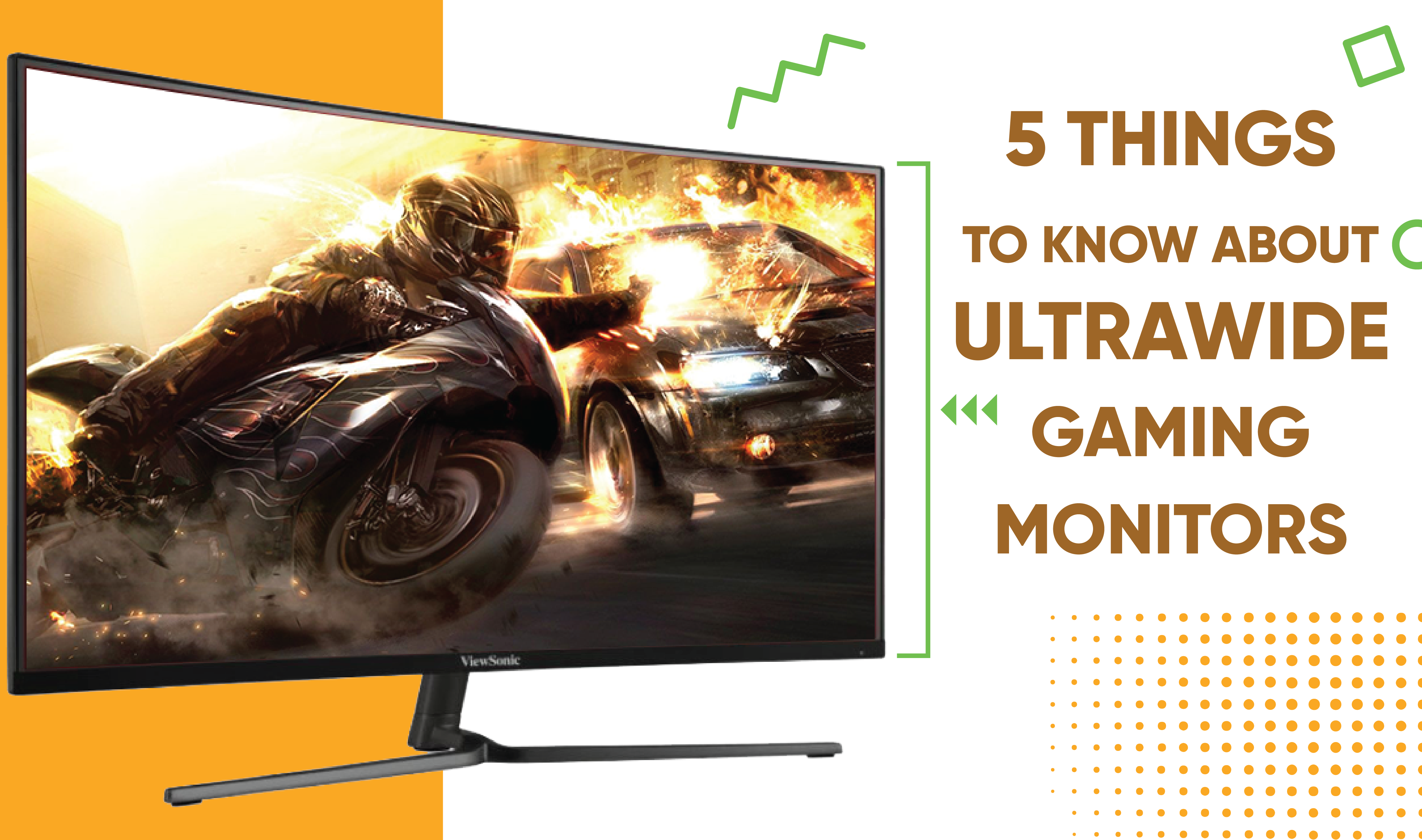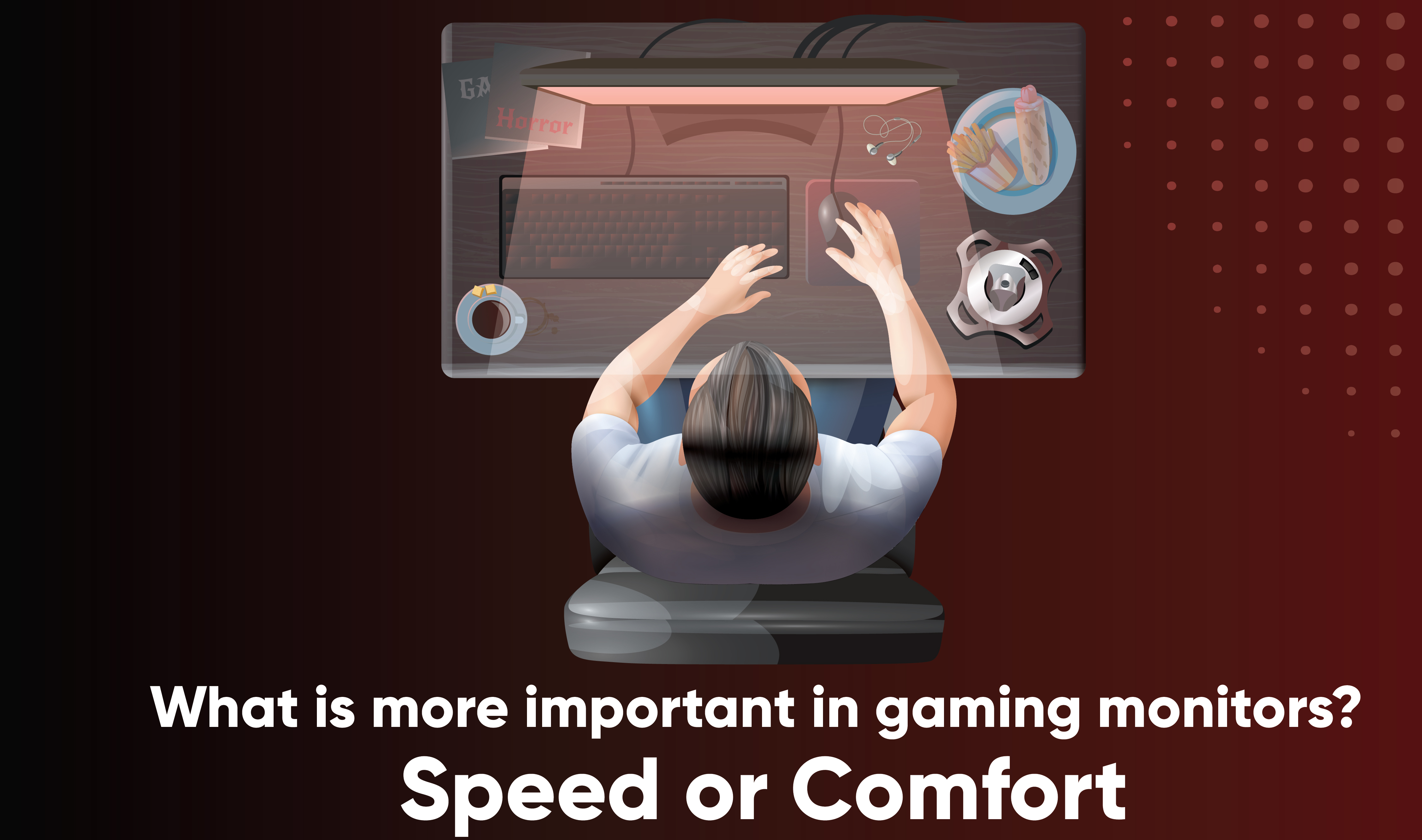17/04/21
Considering buying a gaming monitor but you don’t know where to start? While exploring day and night on the internet, evaluating all the features to be kept in mind before choosing which brand and model suits your gaming monitor requirement the most, you will land up across a thousand conflicting arguments.
Not anymore !!
Let’s get into 5 Things to consider while buying a good Gaming Monitor:
However about the Resolution, what you need for gaming will ultimately be determined by your PC’s GPU, and how much of a budget you’re working with and 1080p is the most common resolution amongst gamers but, as new games and PC technology are released, expect 1440p and 4k gaming monitor to be the de facto standard for the everyday gamer.
One thing to be cognizant of is switching from 1080p to 1440p (or 4k gaming monitor) will be going to have a significant impact on the performance of the PC. This will have a particularly large impact on gaming performance, by reducing the number of frames your PC can drive in any one game.
Usually, IPS panels possess a response of shorter than 5ms which is appropriate for most of your gaming needs. However, TN panels tend to have a faster response time. VN panels sit in the middle of TN and IPS – providing more accurate colors (and viewing angles) than TN but falling short of IPS in the same departments, so this is definitely something to keep in mind while making your decision.
HDMI 2.1: Supports up to 10K gaming monitor at 120Hz
While considering all the above-mentioned aspects, we would like to recommend to you our favorite ViewSonic XG2405 gaming monitor holding a 24” IPS-panel technology with a 1ms response time, refresh rate of 144Hz, and AMD FreeSync Premium technology, providing you the amalgamation of perfect speed, hyper-receptive control, and radiant IPS colors. Coming along with wide-angle viewing, this Viewsonic XG2405's sleek, 3-side borderless, ergonomic design makes it the supreme choice perfectly engineered for casual to hardcore gamers.
Not anymore !!
Let’s get into 5 Things to consider while buying a good Gaming Monitor:
- Resolution & Screen size
However about the Resolution, what you need for gaming will ultimately be determined by your PC’s GPU, and how much of a budget you’re working with and 1080p is the most common resolution amongst gamers but, as new games and PC technology are released, expect 1440p and 4k gaming monitor to be the de facto standard for the everyday gamer.
One thing to be cognizant of is switching from 1080p to 1440p (or 4k gaming monitor) will be going to have a significant impact on the performance of the PC. This will have a particularly large impact on gaming performance, by reducing the number of frames your PC can drive in any one game.
- Fast Display (Refresh Rate)
The number of times a monitor refreshes an image on the screen is what is defined as a refresh rate. In simple words – a higher refresh rate equals a smoother image. This is what makes your game feel and look more responsive. 60hz, 120hz, 144hz, or 240hz are usually the refresh rate supported by most gaming monitors. The difference between 60 Hz – 144 Hz is very ostensible. Nevertheless, once you get above this, it’s quite difficult to detect the difference with the naked eye.
While looking at refresh rates and their impact on gaming, there are three major differences to focus on between the 60Hz-240Hz range. These are improved motion resolution, reduced ghosting, and tearing with better responsiveness.
Whilst 144Hz was once considered high-end, it is no longer the case while entering a new era. The latest gaming monitors often come with a 144hz refresh rate.
- Panel
Usually, IPS panels possess a response of shorter than 5ms which is appropriate for most of your gaming needs. However, TN panels tend to have a faster response time. VN panels sit in the middle of TN and IPS – providing more accurate colors (and viewing angles) than TN but falling short of IPS in the same departments, so this is definitely something to keep in mind while making your decision.
- Build Quality and Ports
The main reason for investing more time and effort while finalizing the build quality of your gaming monitor is simply to make sure of getting value for money. The build quality of your gaming monitor ultimately comes down to the materials used for its construction. Flimsy plastic tends to lead to snapped ports which not only prevent you from being able to establish a secure connection but, also, will cost you more money in replacement.
Another thing to consider while looking for a gaming monitor is the available ports it has. These are in various formats and features e.g. HDMI, VGA, S-Video, DisplayPort, Thunderbolt, and DVI, etc.
HDMI is most commonly used and preferred when it comes to supporting High refresh rates such as;
HDMI 1.4: Supports up to, 4K gaming monitor at 30Hz, or 1080p at 120Hz
HDMI 2.1: Supports up to 10K gaming monitor at 120Hz
- Curved vs Flat Monitors:
You’ll also have to make up your preference among curved and flat monitors while making a better choice for your gaming setup.
Flat Monitors being available in both 21:9 and 16:9 sizes, they have been around for years and are the kind of monitor you likely grew up playing on.
An Ultrawide gaming monitor will also offer you an increased field of view, which is especially advantageous when you’re playing multiplayer games.
In addition, Curved gaming monitors are relatively new to the gaming market. The curvature of a monitor helps in creating the illusion of one’s peripheral vision, which in succession makes playing a game more entrancing.
While considering all the above-mentioned aspects, we would like to recommend to you our favorite ViewSonic XG2405 gaming monitor holding a 24” IPS-panel technology with a 1ms response time, refresh rate of 144Hz, and AMD FreeSync Premium technology, providing you the amalgamation of perfect speed, hyper-receptive control, and radiant IPS colors. Coming along with wide-angle viewing, this Viewsonic XG2405's sleek, 3-side borderless, ergonomic design makes it the supreme choice perfectly engineered for casual to hardcore gamers.
Press Kit
- [Press Release] 5 things to consider while going for an Ultrawide Gaming Monitors



